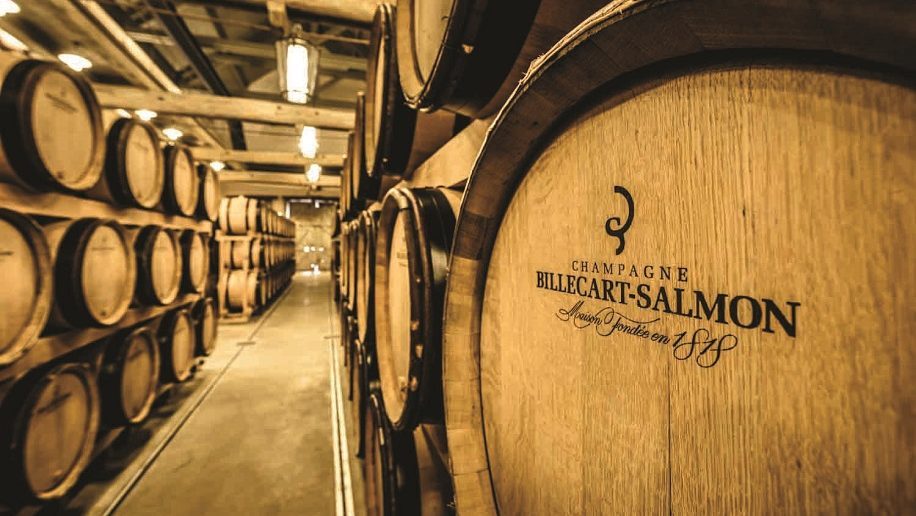
Champagne is not just a drink; it’s an experience and a marker of life’s unforgettable moments.
When it comes to celebration and indulgence, there is perhaps no drink that embodies luxury quite like Champagne. Every pop of the cork signifies joy, every sip a toast to life’s grandest achievements, its finest moments, and love’s milestones.
But what makes Champagne so special? Is the answer in the bubbles? The complexity of the terroir? The historical associations with decadence? I travelled to the region to discover the secrets behind what makes a great Champagne.
Champagne can only be called as such if it’s been grown and produced in the namesake region – it has a unique terroir, with chalky soil and a temperate climate that create the perfect conditions for growing Pinot noir, Chardonnay and Meunier grapes.
But not all Champagnes are the same. There are certain big brand names (with big advertising budgets) that everybody recognises. Moët Hennessy rules the market. The wines and spirts division of LVMH (Moët Hennessy Louis Vuitton) owns six iconic Champagne brands including Veuve Clicquot, Moët & Chandon and Dom Pérignon.
Moët & Chandon is the biggest of these houses, with around 64.7 million bottles sold in 2022. According to the Comité Interprofessionnel du Vin de Champagne, the region as a whole produces more than 300 million bottles of bubbly – 26.9 million drunk by us Brits and 297.5 million in France.
This is wine-making on an almost industrial scale, and it’s also a big tourist industry, with tours of the big houses popular with visitors. However, there are still a few small independently owned brands that make outstanding artisan Champagne too – and this is where I headed to delve behind the mass-produced bubbles and get to the quieter heart of production.
It’s a family affair
One of the oldest family-run houses is Billecart-Salmon, and unlike the larger Champagne houses, tours here are by invitation only. Established in 1818, it has been producing artisan Champagne for more than two centuries. With production at a relatively modest two million bottles per year, it’s not something you’ll find in your local supermarket but worth hunting down for that special occasion.
Based in the small village of Mareuil-sur-Aÿ near Epernay, Billecart-Salmon is nestled in the heart of the Champagne region and its grand cru vineyards are the birthplace of some of the world’s finest Champagnes. Painted in soft buttery yellows, the Billecart estate lies behind modest wrought iron gates. Once inside it opens into a delightful courtyard dominated by the big family home, manicured walled garden and a collection of buildings housing the hub of the production.

Mathieu Roland-Billecart, seventh generation head of house, explains that aside from the terroir, it’s the craftsmanship of the vintner, winemakers and cellarmen that transform humble grape juice into a sparkling delight.
The vines at Billecart-Salmon are grown with the same dedication, passion and skills handed down through the generations. More than 100 hectares is cultivated, with each parcel of land having its own individual requirements. It’s also maintained with the highest respect for the environment: green manures are used instead of herbicides, bees are kept to help pollination and, in some areas, the horse-drawn plough has been reintroduced alongside sheep to graze between the vines and minimise soil disruption to the valuable terroir.
All grapes are hand-picked to maximise quality, and only the first pressing of juice is used for fermentation. This meticulous attention to detail is prevalent at every stage of production, preserving the Billecart-Salmon heritage.
A grand tour of the production process included visiting the dazzling stainless steel fermentation vats in rooms more akin to science labs, ageing rooms with towering rows of oak maturing barrels and the miles of chalk tunnels beneath the village, which house many decades of vintages at a constant cool temperature.
“The secret is time, there is no rush here – it will take a minimum of 30 months,” says Roland-Billecart. “We use slow fermentation that never exceeds 13 degrees, followed by months maturing in oak casks to add flavour and delicate aromas. Long bottle ageing in 17th century chalk cellars refines the finesse and balance of the wine using time tested techniques, and then there is the tasting. Generations of palate refinement are needed for the ultimate quality control – it must be perfect,” he adds.
Every bottle has a unique “passport” called the “origin”– customers can look up the registration number on the bottle to discover its particular history, including things like when it was made, which grapes were used, and how long it was aged for.
We also learned about Champagne’s culinary potential. A multi-course menu demonstrated how a zesty Blanc de Blancs pairs with fish and seafood dishes, while richer full-bodied vintages have the depth and complexity to complement chicken and veal dishes, and a soft blush rosé made for a sublime partner to fruity desserts. The key takeaway was: experiment! Champagne is much more versatile that you think.
The price tag of an artisan product like Billecart -Salmon ranges from an affordable £45 for a Brut Reserve to £400-plus for a Cuvée Blanc de Blancs Grand Cru vintage. According to Roland-Billecart, when you choose Champagne, you’re not merely purchasing a glass of fizz: you’re investing in an experience. It’s the anticipation of that first crisp sip, the cascade of bubbles dancing on your palate, and the feeling of euphoria that ensues: a timeless symbol of luxury, refinement and artistry that has been crafted over generations. Bring on the bubbles!
Words: Annie Harris










